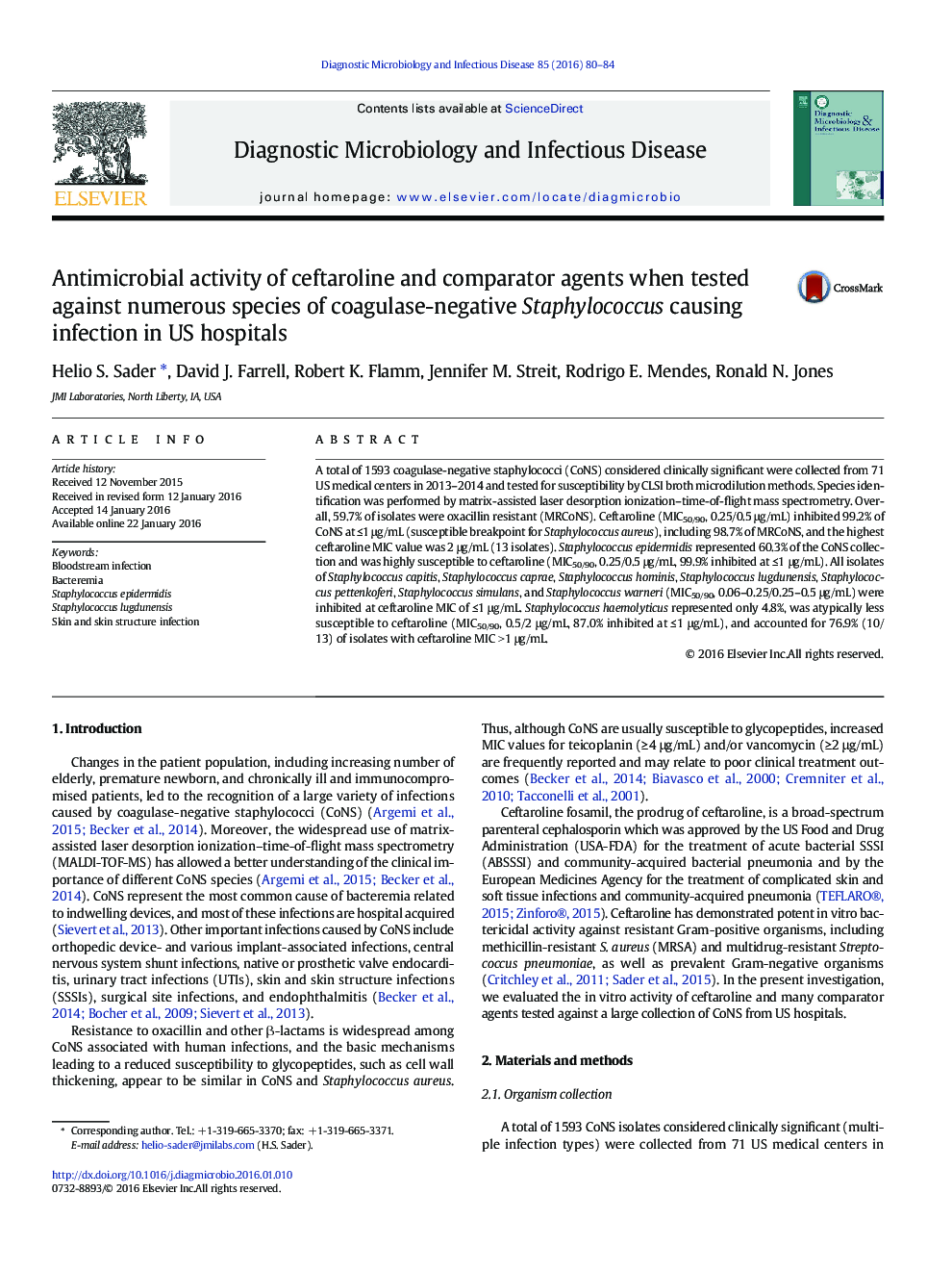| Article ID | Journal | Published Year | Pages | File Type |
|---|---|---|---|---|
| 10168260 | Diagnostic Microbiology and Infectious Disease | 2016 | 5 Pages |
Abstract
A total of 1593 coagulase-negative staphylococci (CoNS) considered clinically significant were collected from 71 US medical centers in 2013-2014 and tested for susceptibility by CLSI broth microdilution methods. Species identification was performed by matrix-assisted laser desorption ionization-time-of-flight mass spectrometry. Overall, 59.7% of isolates were oxacillin resistant (MRCoNS). Ceftaroline (MIC50/90, 0.25/0.5 μg/mL) inhibited 99.2% of CoNS at â¤1 μg/mL (susceptible breakpoint for Staphylococcus aureus), including 98.7% of MRCoNS, and the highest ceftaroline MIC value was 2 μg/mL (13 isolates). Staphylococcus epidermidis represented 60.3% of the CoNS collection and was highly susceptible to ceftaroline (MIC50/90, 0.25/0.5 μg/mL, 99.9% inhibited at â¤1 μg/mL). All isolates of Staphylococcus capitis, Staphylococcus caprae, Staphylococcus hominis, Staphylococcus lugdunensis, Staphylococcus pettenkoferi, Staphylococcus simulans, and Staphylococcus warneri (MIC50/90, 0.06-0.25/0.25-0.5 μg/mL) were inhibited at ceftaroline MIC of â¤1 μg/mL. Staphylococcus haemolyticus represented only 4.8%, was atypically less susceptible to ceftaroline (MIC50/90, 0.5/2 μg/mL, 87.0% inhibited at â¤1 μg/mL), and accounted for 76.9% (10/13) of isolates with ceftaroline MIC >1 μg/mL.
Related Topics
Life Sciences
Immunology and Microbiology
Applied Microbiology and Biotechnology
Authors
Helio S. Sader, David J. Farrell, Robert K. Flamm, Jennifer M. Streit, Rodrigo E. Mendes, Ronald N. Jones,
